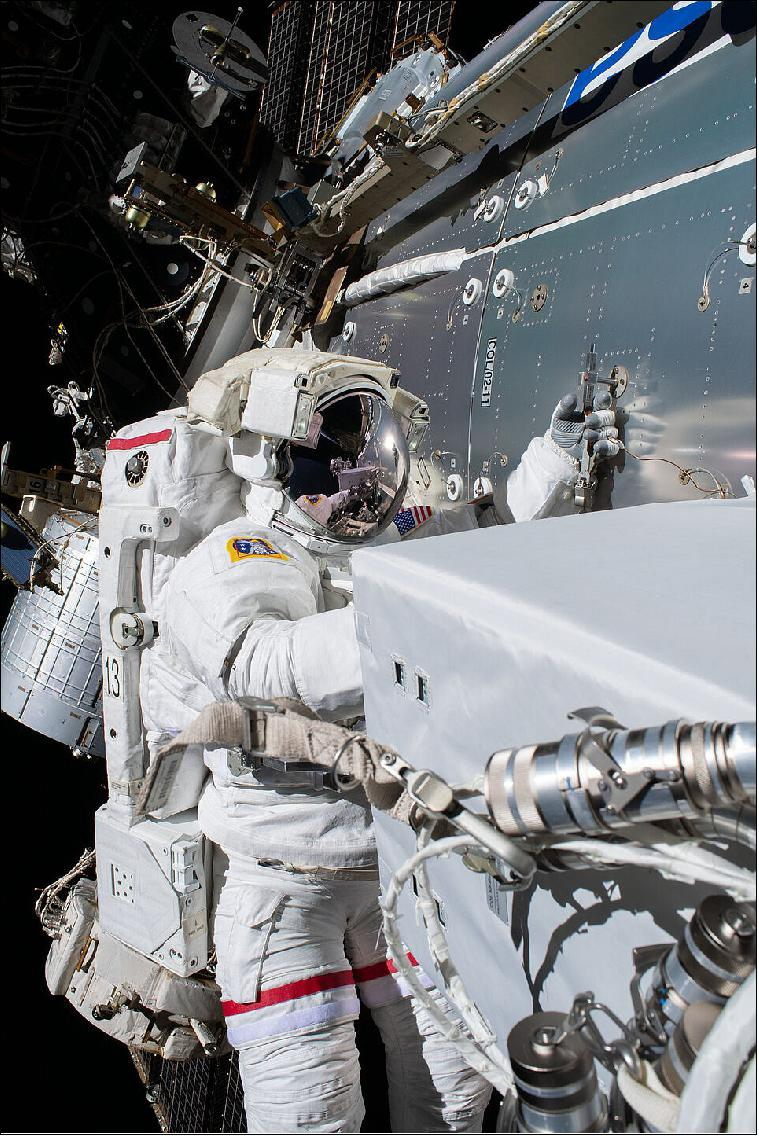PAGE CONTENTS
Objectives
The main object of this Atlas program was to manufacture, perform PFM testing and deliver flight models to the Columbus Ka-band Terminal. The total delivery (including FMs) consisted in prime and redundant frequency up-converter units and prime and redundant down-converter units between Ka-band and L-band.
The product developed is in general targeted to meet the Ka-band ISL market and Kongsberg have been a part of the MDA team developing this product. The first flight opportunity was the ColKa, a Ka-Band terminal to communicate from ISS Columbus to EDRS.

Challenges
The frequency converters between Ka-band and L-band are tailored to meet the requirements of generic Inter Satellite Link terminals, typical for LEO-to-GEO communication. Normally these converters will have a fairly narrow receive section and a broadband transmit section.
Both the converter units are challenging. A common challenge is the relatively high input or output frequency. Ka-band designs will always give challenges in implementation. For the Up Converter, it is difficult to maintain a flat in-band response and the required group delay flatness over the defined 400MHz bandwidth. For the Down Converter, the Ka-band input frequency and a relatively high gain result in challenging test methodology to assure accuracy and repeatability in the tests.
System Architecture
Down Converter Chain Description:
The incoming RF signal at Ka-band is routed through a waveguide isolator followed by a Ka- to L-band converter hybrid. The converter hybrid contains a single mixer stage for frequency conversion together with filtering and amplification of the RF signal. A Temperature Gain Control (TGC) to ensure a stable performance over temperature.
Up Converter Chain Description
The incoming RF signal at L-band is routed through the L-band PCB, which utilizes filtering amplification and Temperature Gain Control of the signal. A converter hybrid is located after the L-band PCB and contains a single mixer stage for frequency conversion from L-band to Ka-band. From the converter hybrid, the signal is routed through a waveguide filter to suppress unwanted mixing products and the LO leakage, and into a driver hybrid to provide the required output level.
LO Generation (similar for both units)
The reference signal for the LO frequency synthesizer is generated by an OCXO. A sampling phase base synthesizer is generating a LO signal at L-band, which is multiplied by a factor of 18 in three separate multiplication stages to reach the desired Ka-band frequency.
EPC (similar for both units)
The EPC is realized by a fly-back converter topology and transforms the main bus voltage of +28V nominal to the required secondary voltages.
Plan
The Project Plan consists of the following milestones
-
Contract Kick Off
-
PFM Test Readiness Review
-
PFM Acceptance Review
-
Commissioning Results Review
-
One-Year-in-Orbit Results Review
-
Final Review
Current Status
Completed.
